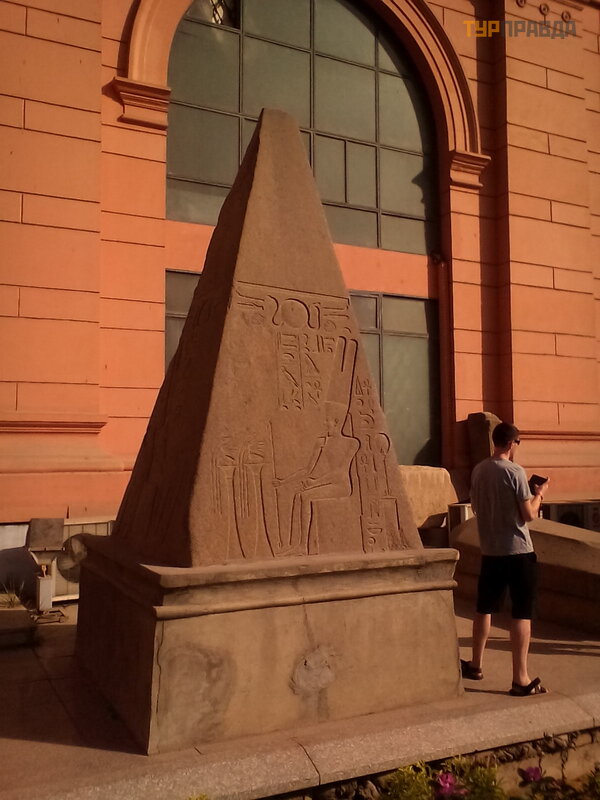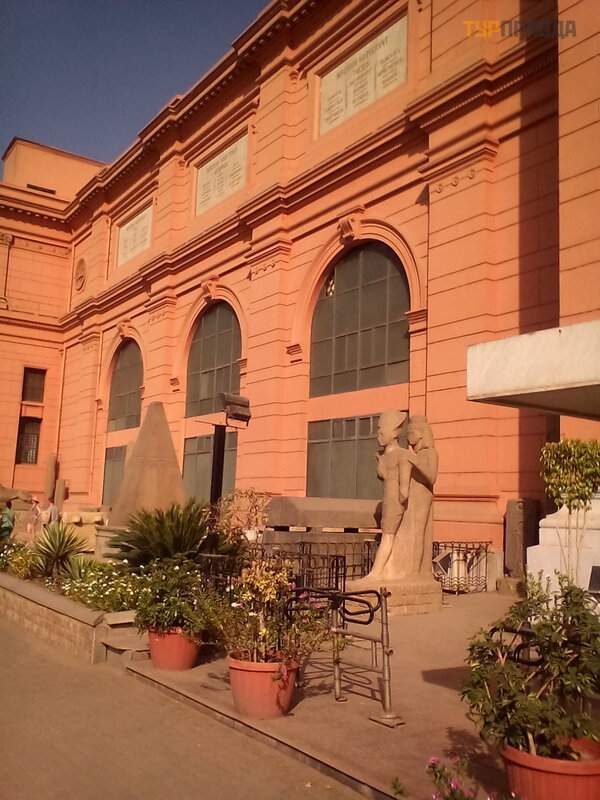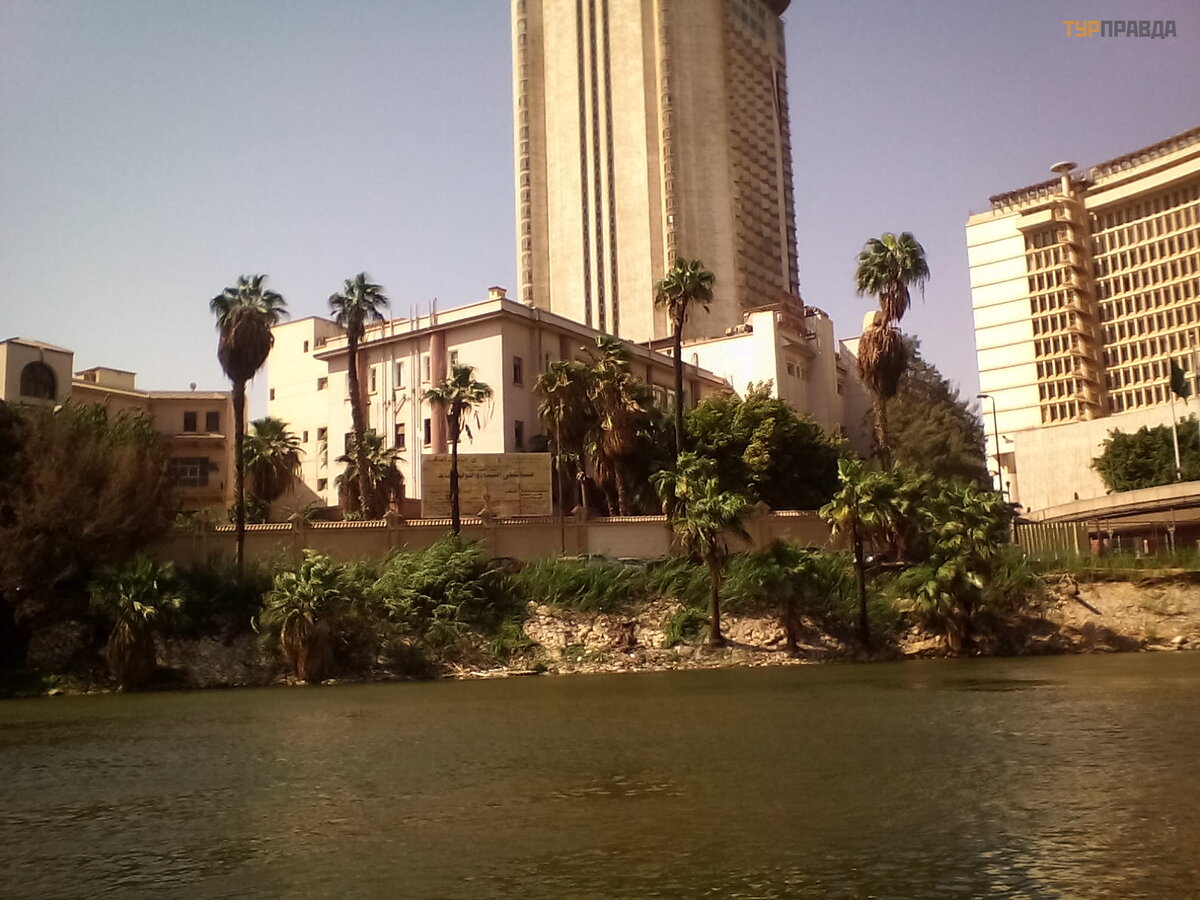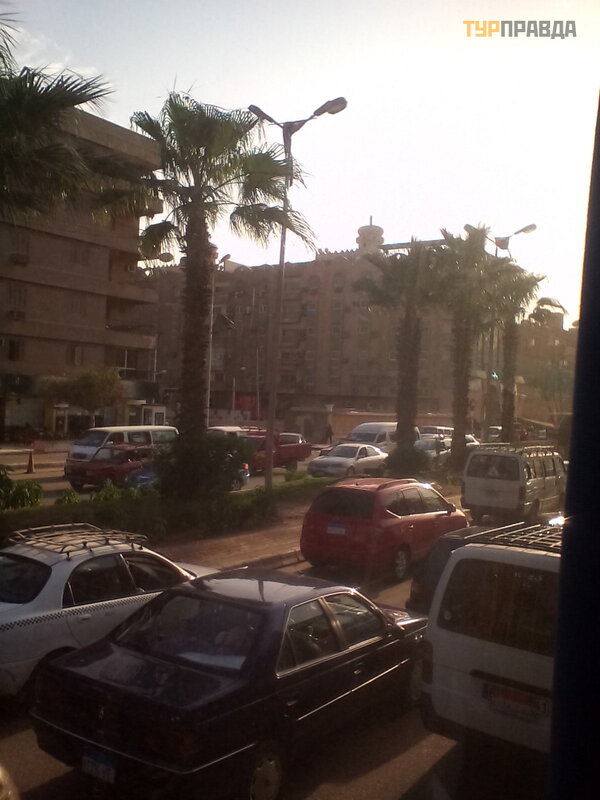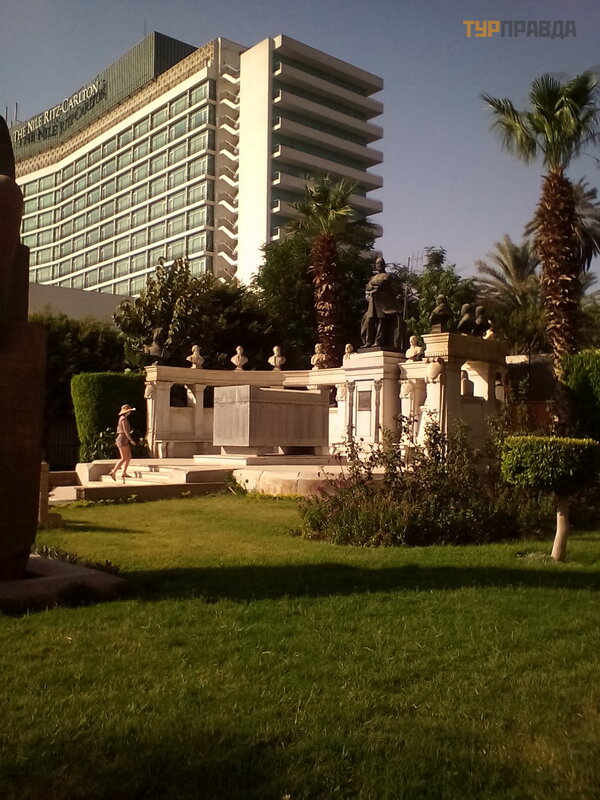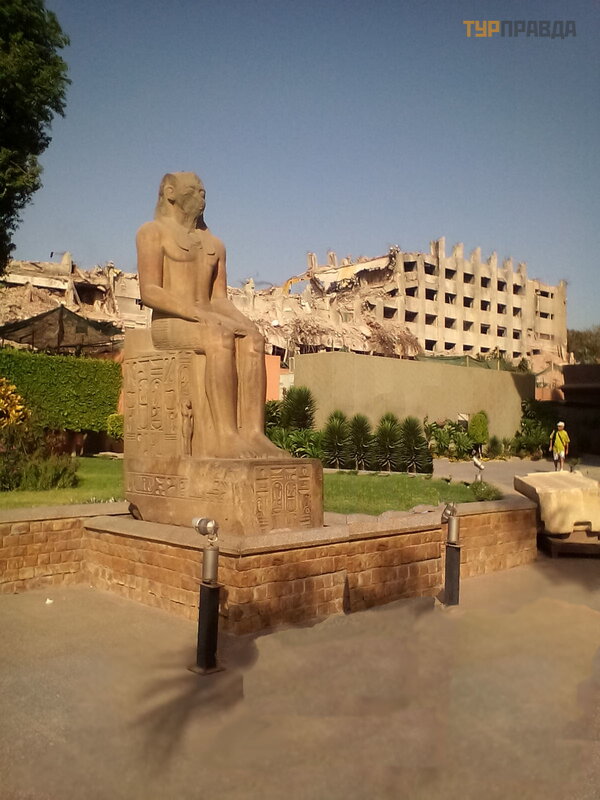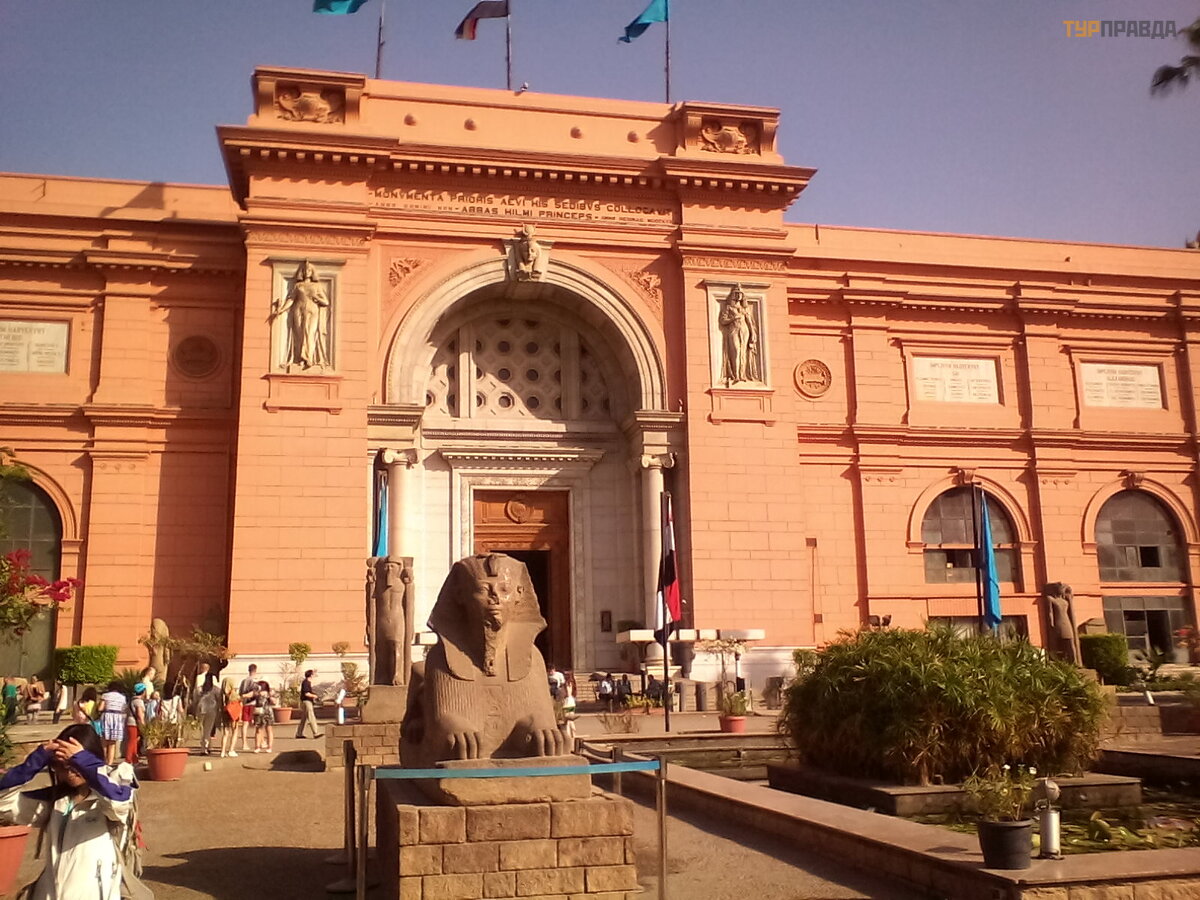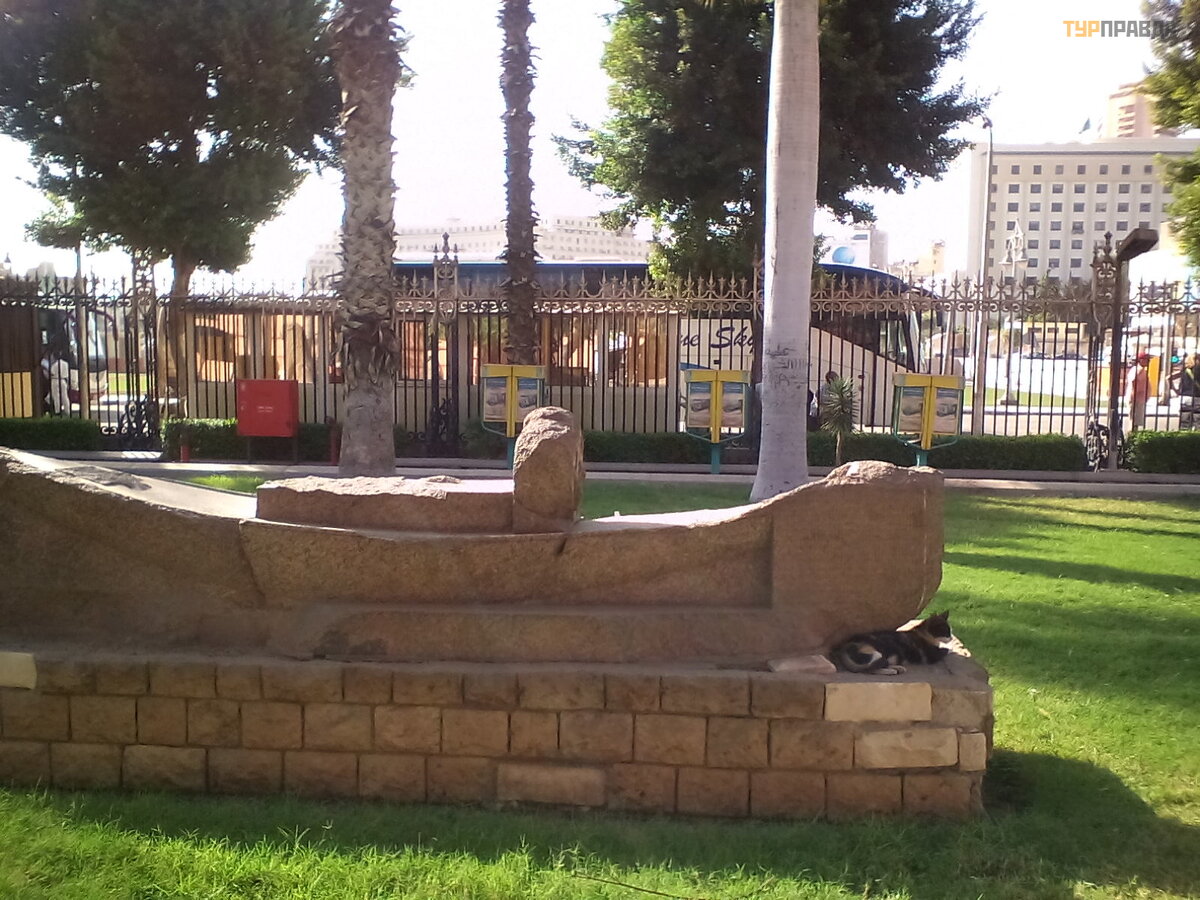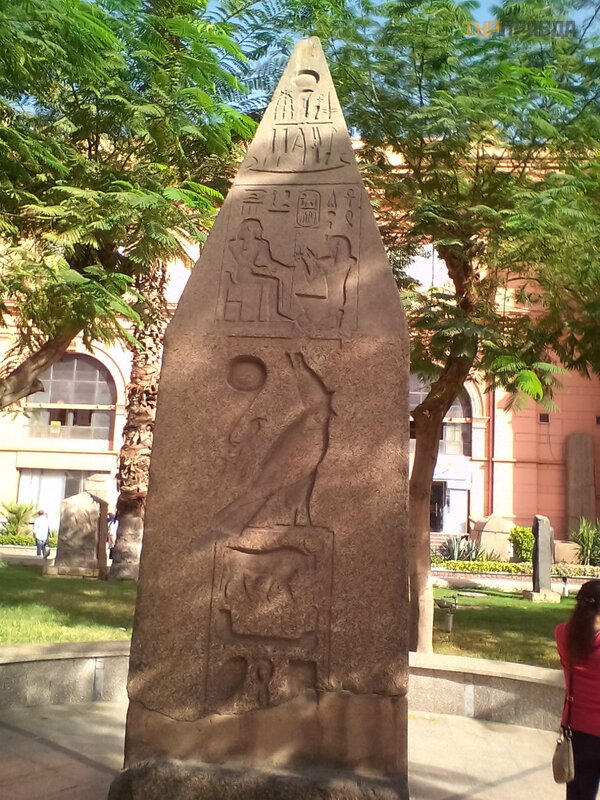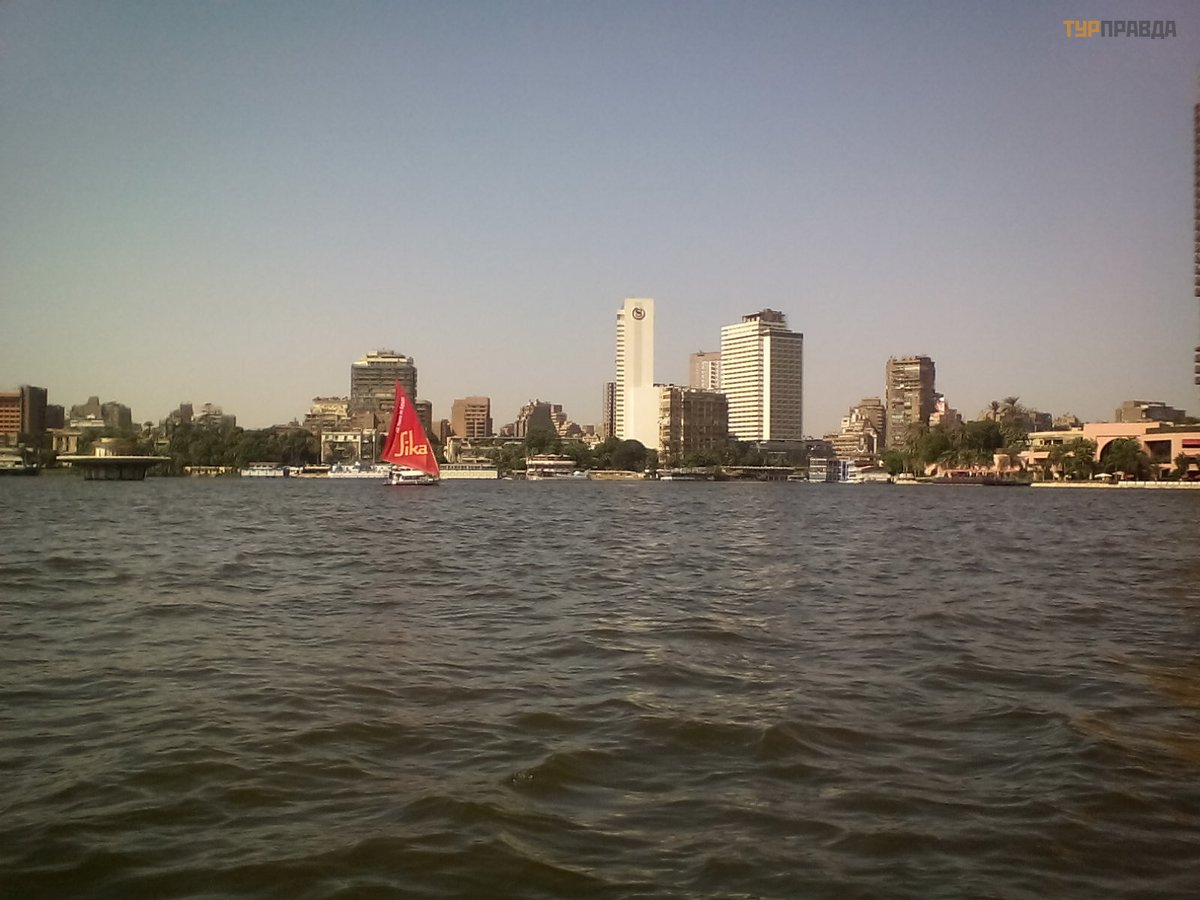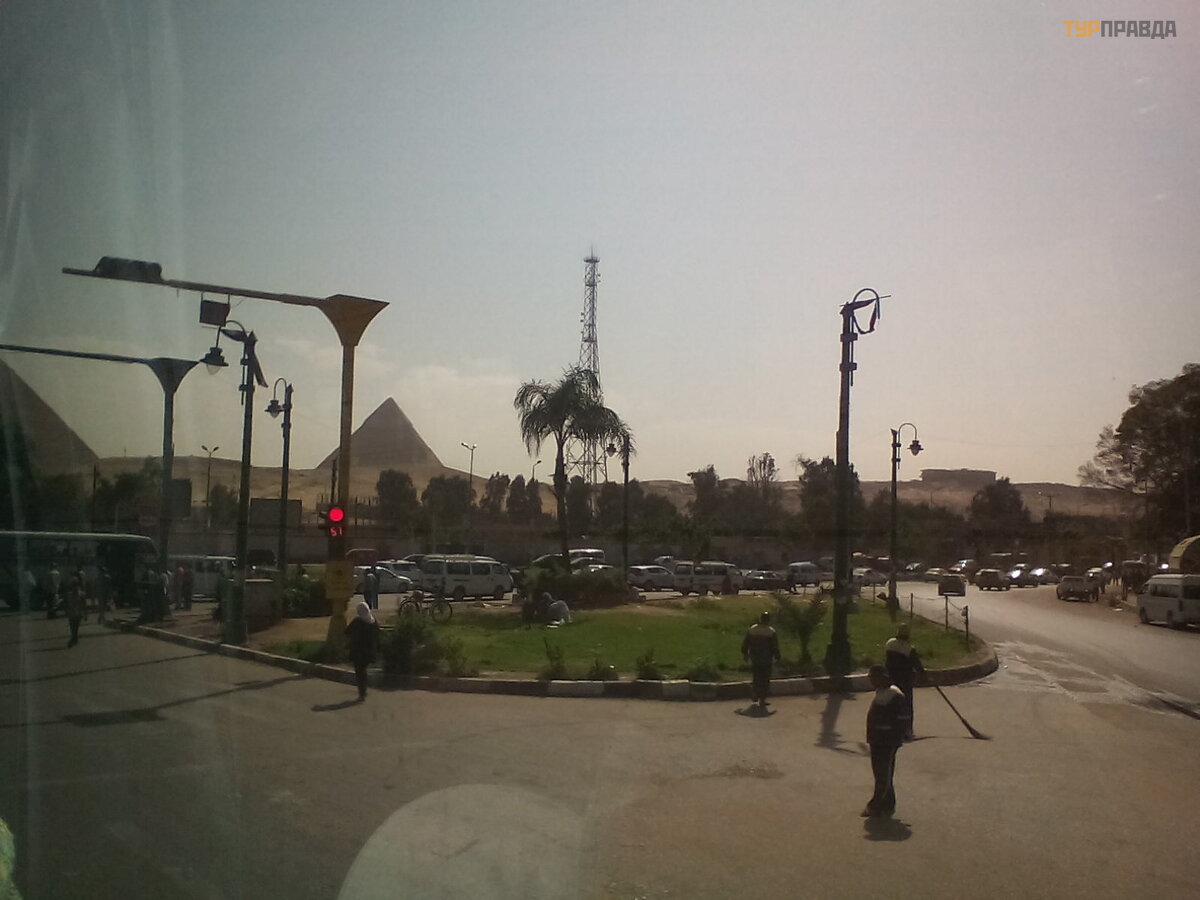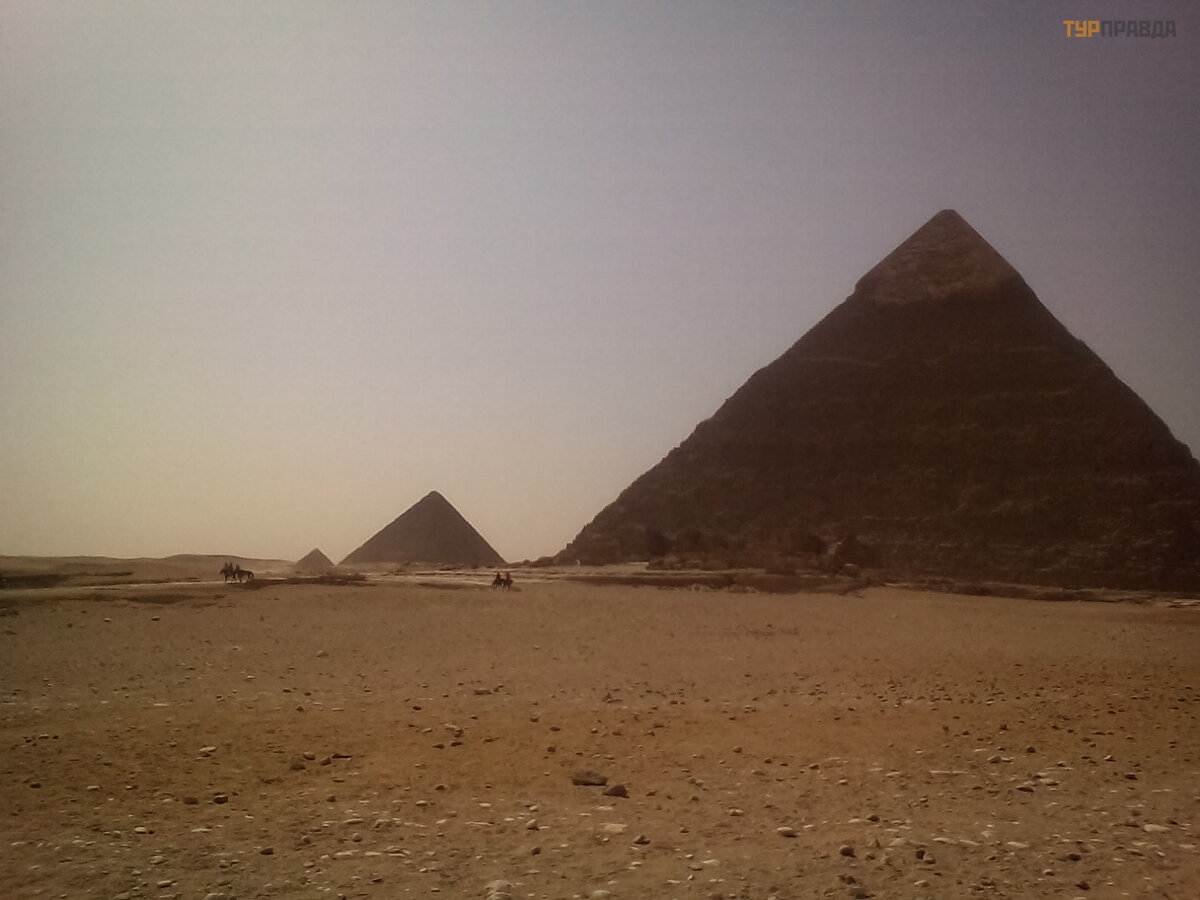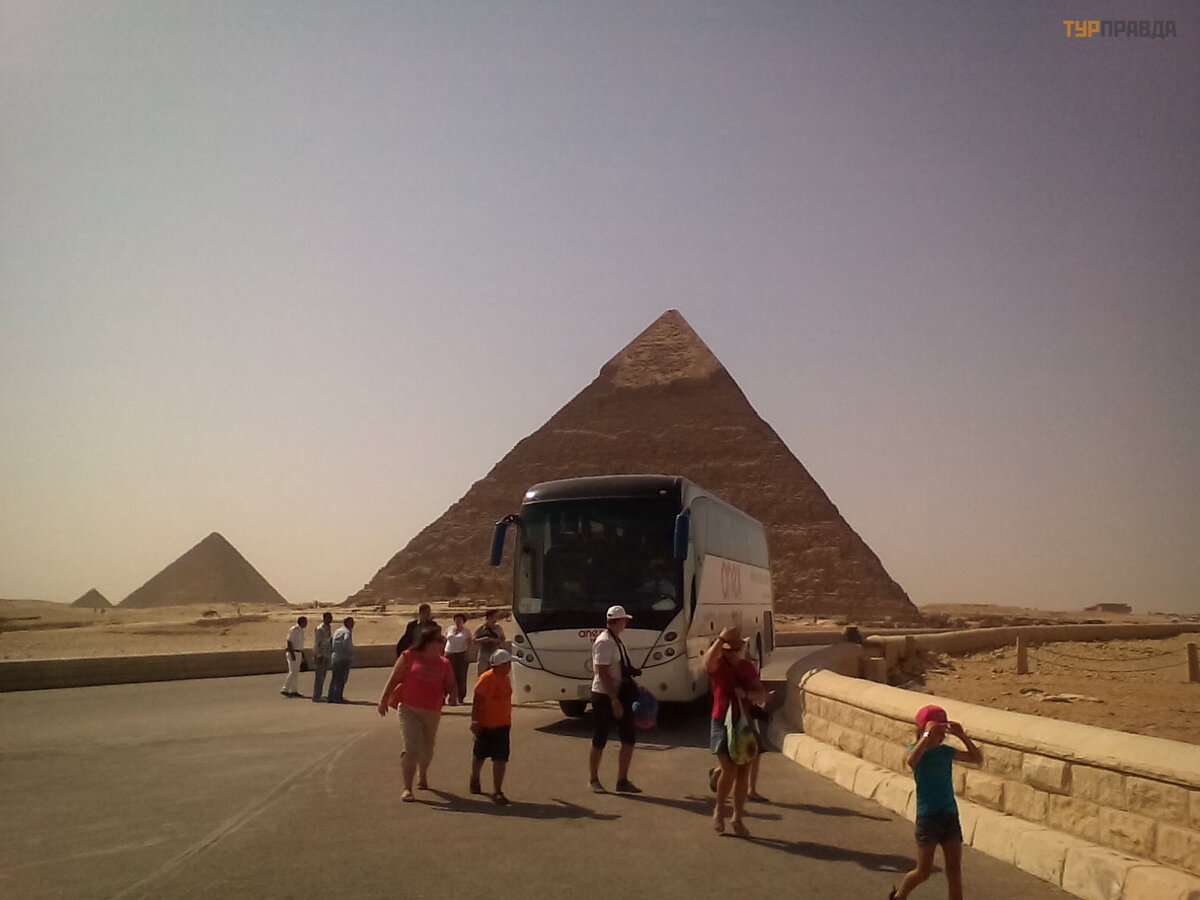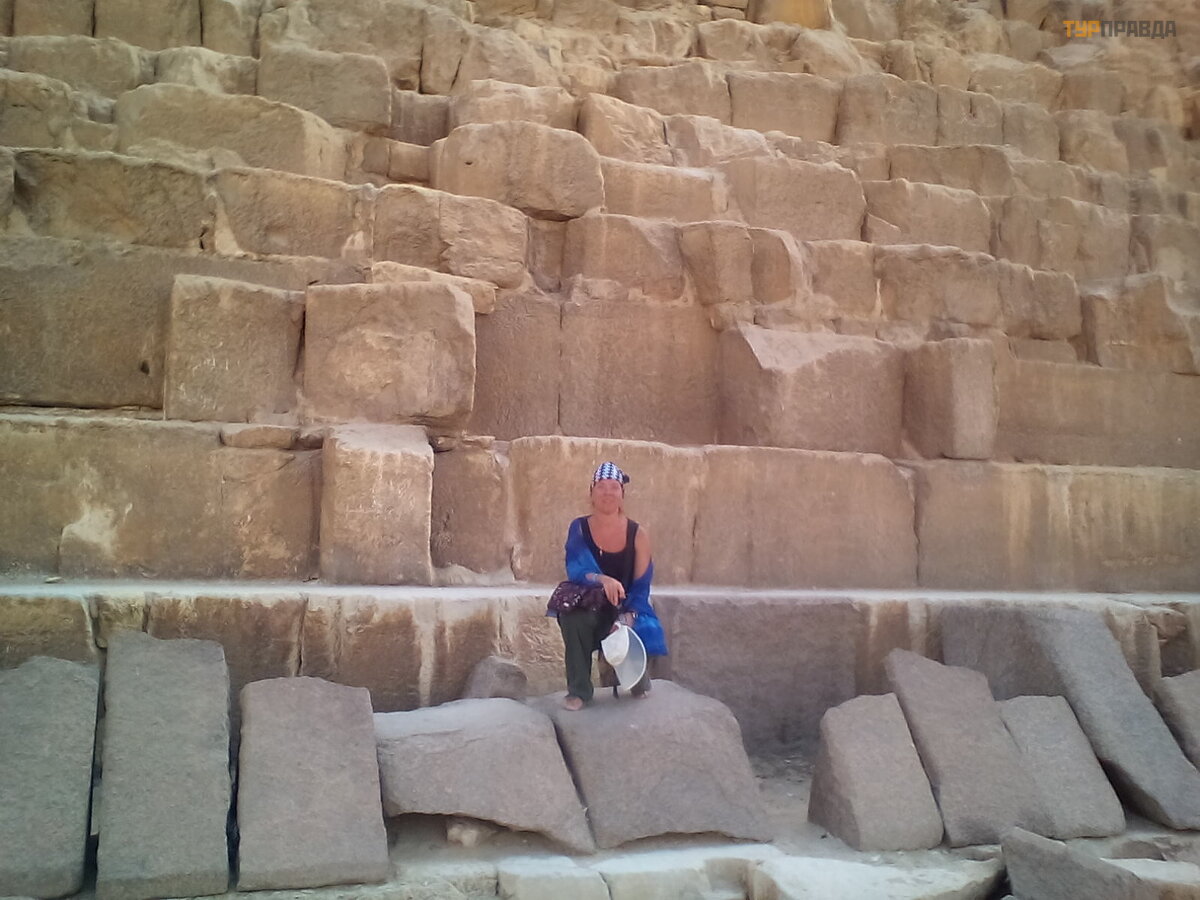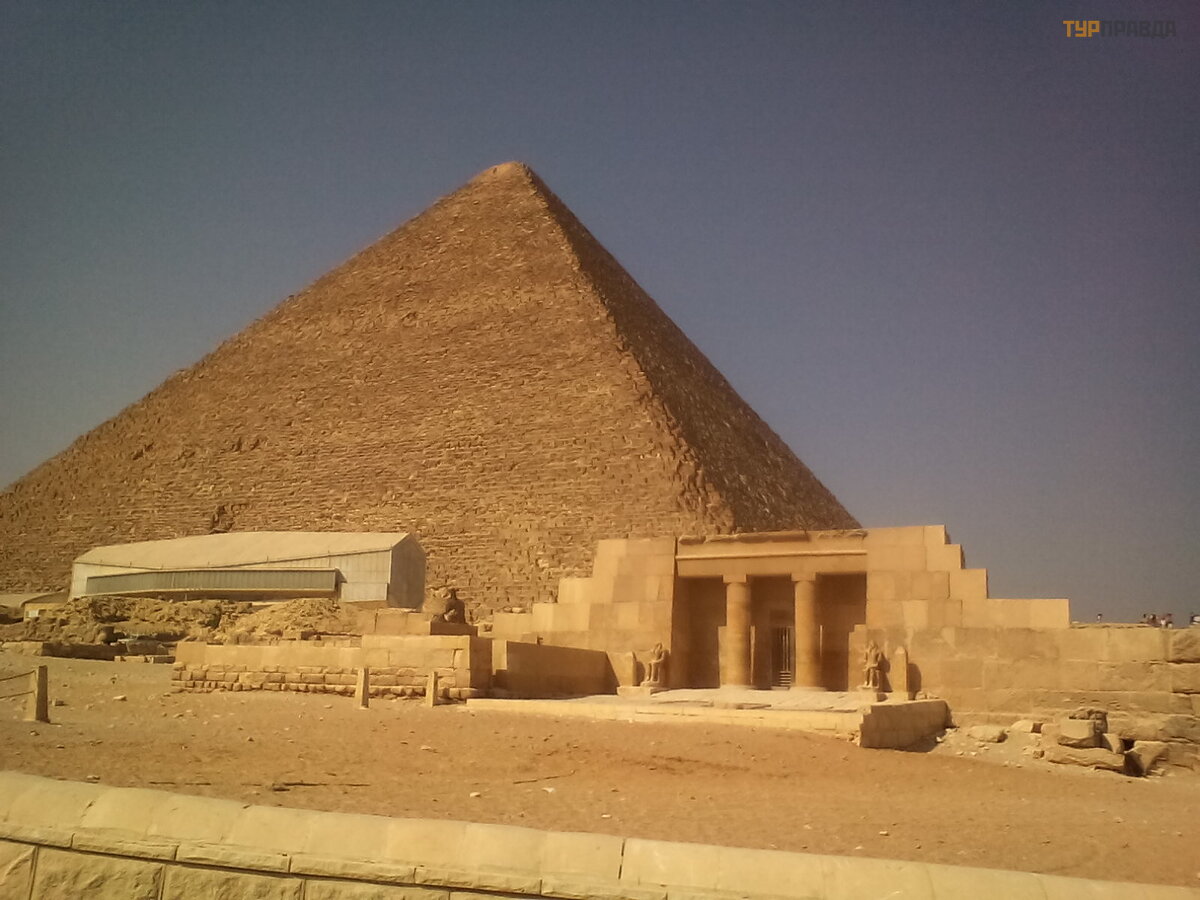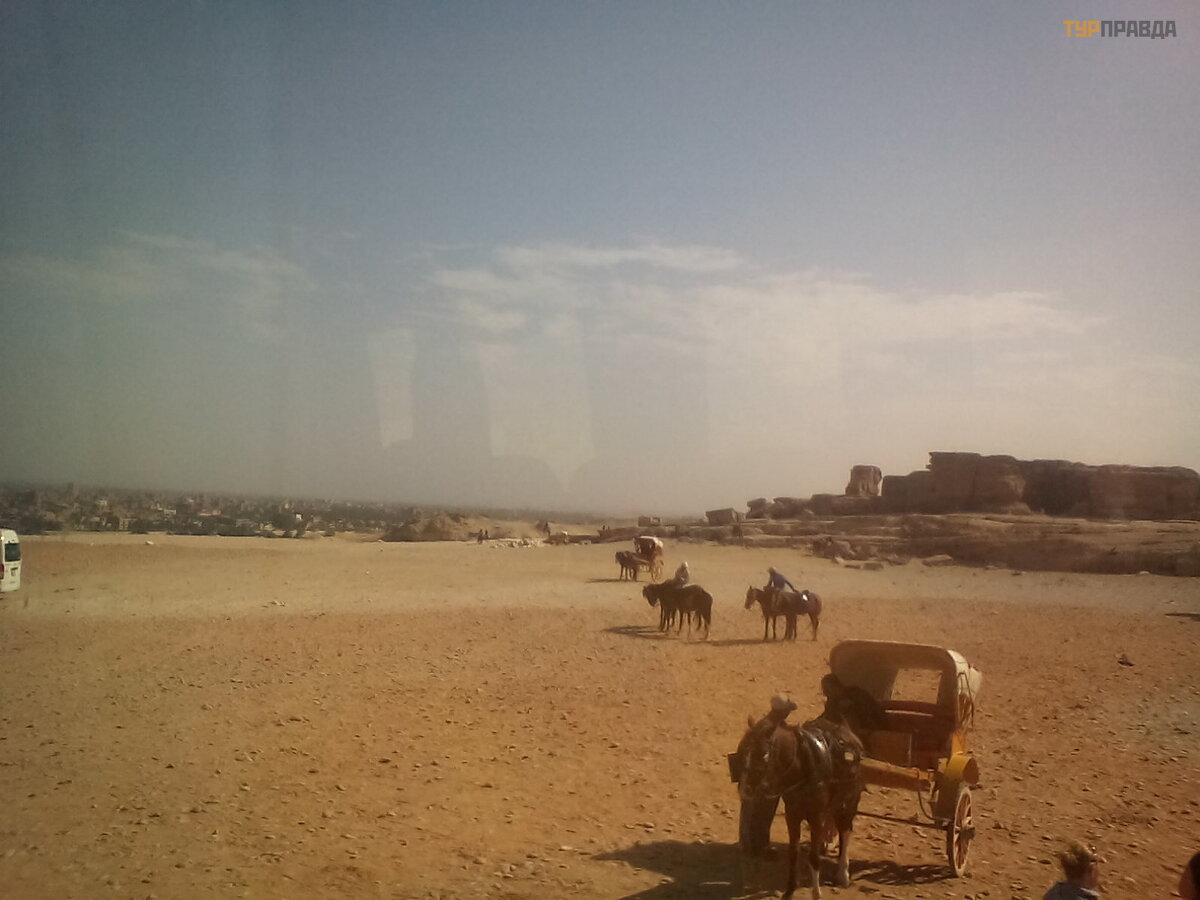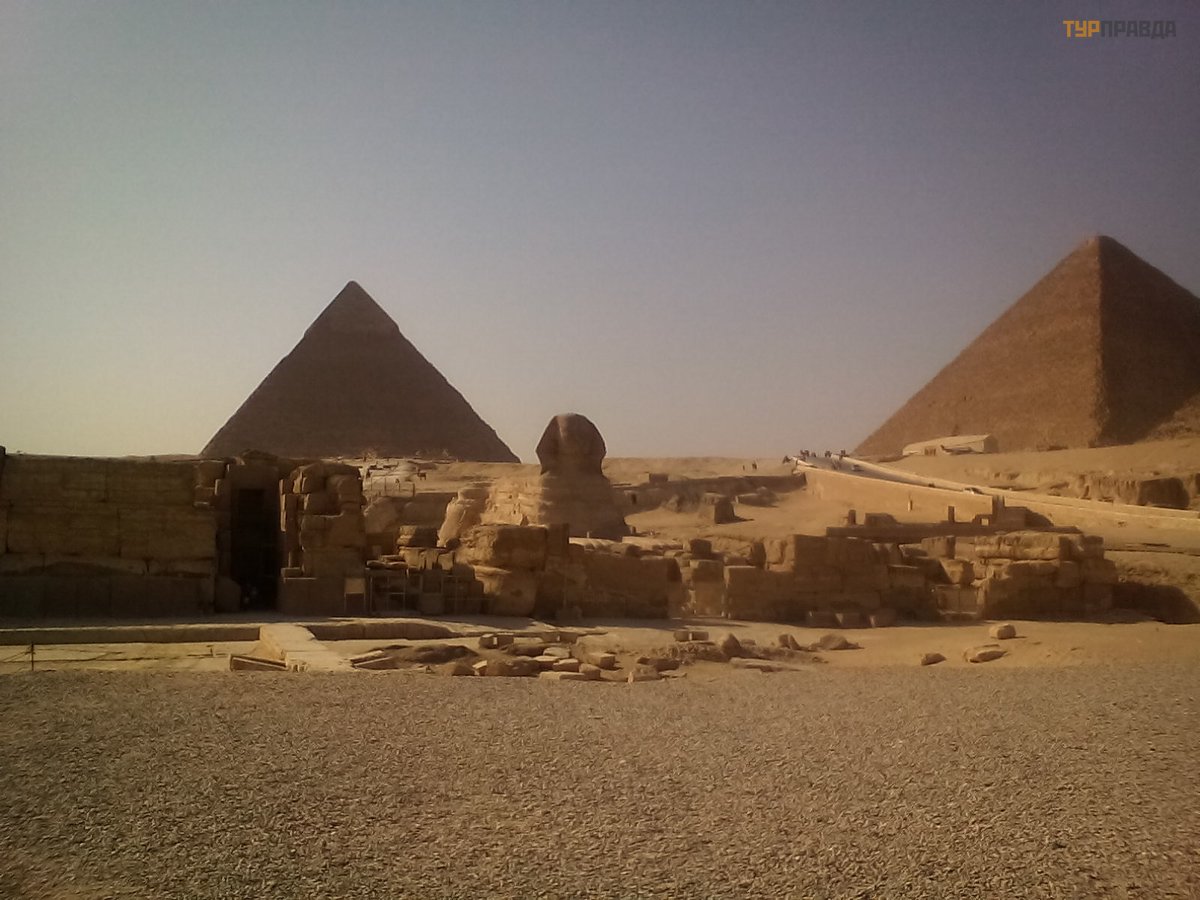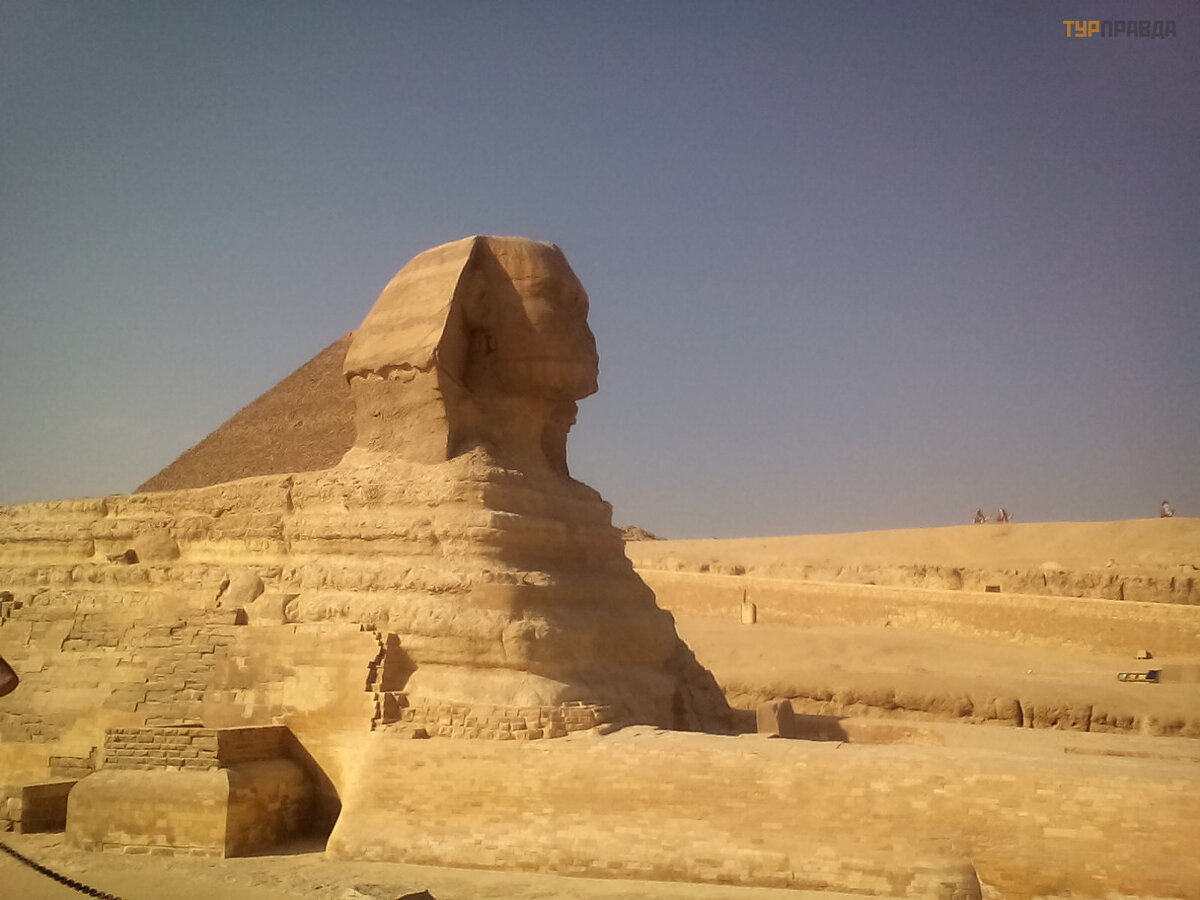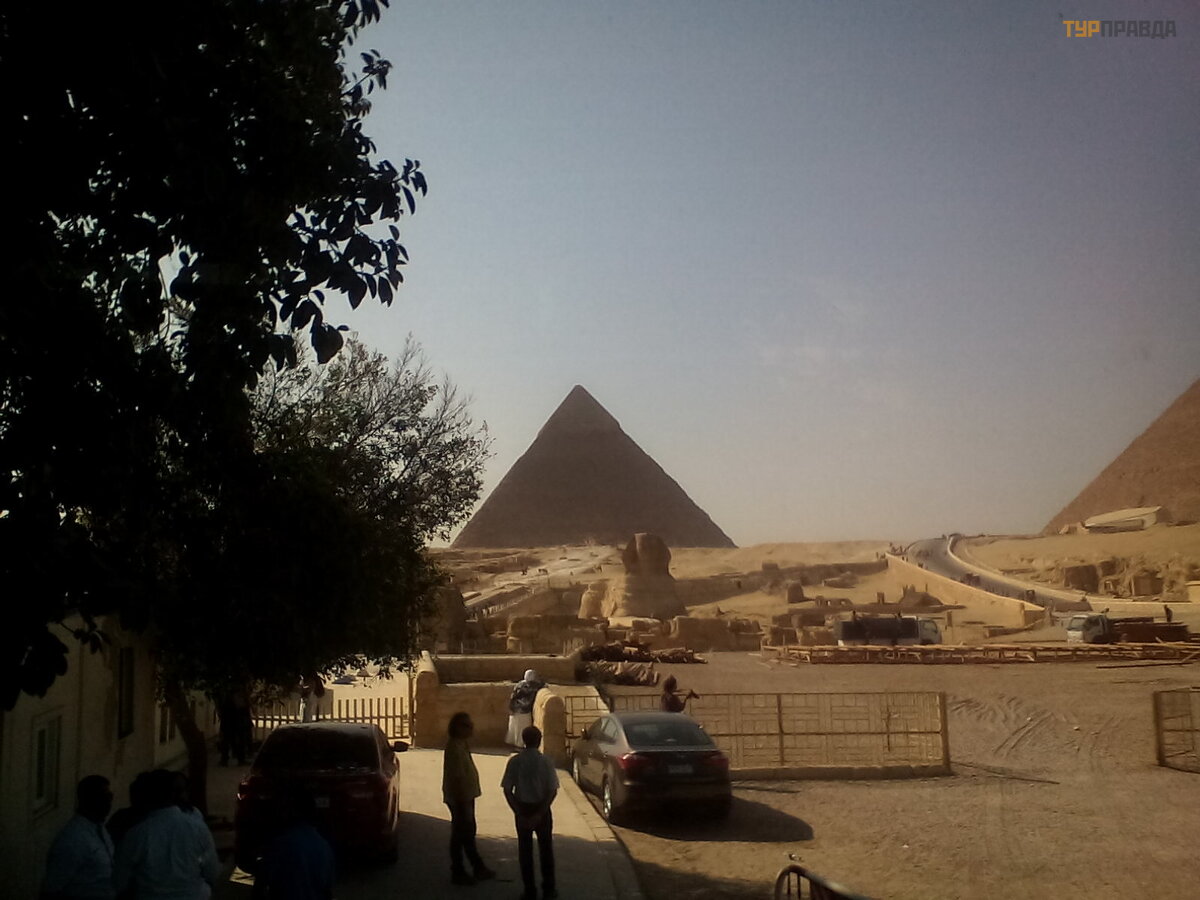I have been wanting to visit Egypt for a long time. Part 3
Part 3. Excursion to Cairo.
And here it is, the longed-for goal of our trip - an excursion to the pyramids and the Cairo Museum.
On the territory of the museum
This time I had to get up at one in the morning. To go even further, but the road was well tolerated, and the buses at the Anex Tour are branded, comfortable. It should be noted that the roads in Egypt are good, there is practically no oncoming traffic anywhere, they are mostly one-way.
All landscapes along the road are very monotonous - gray sandy mountains and endless desert. Every few kilometers there are checkpoints with submachine gunners. We had breakfast right on the go in the bus, there were no parking lots. But around 9 am they were already there.
According to the program, the museum in Cairo is at the beginning of the trip,
National Museum in Cairo
and the pyramids in the afternoon.
In the center of the city, along the banks of the Nile, there is an old colonial building. Elite mansions and high-rise buildings, green and not hot at all.
Colonial buildings in Cairo
Familiar to us +27. But the farther from the center, the hotter and poorer.
Streets of modern Cairo
The greenery disappears, the river turns and the desert approaches the city, or vice versa, this city approaches the desert. This has never been seen before, but in Egypt, almost all the houses are unfinished, without roofs. This exempts residents from paying taxes after the commissioning of the facility. That's how everyone saves: they live for years, they finish building floors for young families of their grown children, but they don't cover them with roofs. Rain in Egypt is rare, so the lack of a roof does not interfere with the usual way of life. Another surprise in Egypt was the lack of sidewalks. Apparently, they do not consider it necessary to lay them. Everywhere, except for the central part of Cairo, sidewalks are completely absent in new areas, just the same gray desert under your feet. And, of course, I was very surprised by the dirt in the cities. Especially the landfills along the banks of the Nile. It would seem that the only water artery in the whole country needs to be protected. But no, they dump garbage in heaps right on the banks, as if this is the best place for a dump!
Cairo is a city of contrasts. Right next to the National Museum, the modern Ritz-Carlton hotel.
The Ritz Carlton Hotel near the Cairo Museum
And next to the fence, right next to the territory of the museum, a house is being demolished.
The house near the museum is being destroyed
You can't take pictures inside the museum, but you can take pictures outside.
National Museum in Cairo
True, there are no such outstanding objects as in the museum itself, but a pleasant green area with a small pond and Egyptian statues attracts the attention of a tourist.
On the territory of the Cairo Museum
The museum has a huge number of exhibits that miraculously survived and were not taken to Europe.
Artifacts in the Museum
Very interesting statues, but the top impressions are the sarcophagus and the golden mask of Pharaoh Tutankhamun. And of course, who doesn't want to look at the treasures of Tutankhamun's tomb? These priceless exhibits occupy almost half of the second floor of the museum building - 1700 artifacts located in more than 10 halls. Here you can find a majestic statue of Tutankhamen standing on the back of a panther, a solid wood throne decorated with gold and precious minerals, golden amulets, sarcophagi. I was very surprised that the sarcophagus consisted of four wooden cases (all of them, as they decrease in size, occupy a separate hall of the museum), which “covered” a square stone sarcophagus made of monolithic quartzite. On top of it rested a red granite lid that weighed one and a half tons. Under it, archaeologists discovered three more sarcophagi, the so-called anthropomorphic ones, made in the shape of a human body and stacked one inside the other. The first two sarcophagi, made of wood, were upholstered with inlaid gold plates and semi-precious stones, and the third was made of pure gold. Its length is 1.8 m, weight - over 110 kg. It contained the mummy of Tutankhamen with a golden mask. The sarcophagus with the mask traveled all over the world, and many people around the world were able to look into the eyes of Tutankhamun, but until that moment we had seen these treasures only in pictures. So it is difficult to convey our feelings of admiration and delight. Everyone needs to see this.
There are many objects in the museum worthy of a more detailed study, but time is short. However, they did see a real mummy. I didn't think it looked like this. The mummy still has hair and teeth! It's scary to think how old she is! And it's scary. . .
After the museum we have a boat trip on the Nile and a swim in a restaurant on the water. Pleasant relaxation with the opportunity to see the city from the water.
View of modern Cairo from a boat
Contrary to our stereotype, crocodiles do not swim in the Nile. More precisely, they float, but in the part that flows to the Aswan Dam.
And, finally, we are going to the pyramids. One of the seven wonders of the world! Drop all your ideas about them! All this looks completely different. The pyramids are known to be located in Giza. And Giza is now a district of Cairo. They look strange against the backdrop of industrial buildings.
The pyramids are already visible from the area of modern Cairo
But still, we took the “advertising” photos of the three pyramids familiar to the eye, trying not to catch modern houses in the lens.
The Great Pyramids of Giza
Upon arrival at the territory of the complex, tourists are asked to get off the bus and take all their belongings, including lunch boxes. All things shine through, as at the airport, and we are led through metal detectors according to the same procedure. Then they drive to the three pyramids known to all (there are 10 of them in the Giza region).
Annex Tour bus
We listen to a short story of the guide and get two hours of free time to explore.
To say that the size of the pyramids is impressive is to say nothing. Even the size of each individual block is impressive. He is as tall as a man!
Granite blocks of Khafre's pyramid
Where so many granite blocks came from in this sun-scorched desert remains a mystery to us personally. The official version when looking at the pyramids does not hold water.
For all tourists, the entrance to the pyramid is only in the pyramid of Cheops.
Cheops Pyramid
However, it costs extra money. But our guide told the group which small pyramid we could enter for free by telling the guards the password from his name. He himself is an archaeologist and worked there at the excavations. All the pyramids inside are arranged in the same way, so the difference is only in size. Inside this small pyramid, we rushed as a group and at once. The guide did not warn us that the descent was "four deaths", practically squatting on wooden decks and at a steep slope. Inside the pyramid is very stuffy and humid. It's extremely difficult to get along with your teammates. But still, we all withstood this test with dignity: we went down to the very bottom, looked at the burial chamber and safely got out. And in our group there were people of very "significant merit".
On the territory, of course, you can ride horses and camels, the entire area around the pyramids is covered in animal excrement, the suffocating smell of urine is felt in the heat. A specific place!
Egyptians in wagons and on horseback, on camels and donkeys, constantly drove up to us, addressed us in English, Russian and Ukrainian, asking what country we were from. Of course, quite intrusively they offered to take a picture with their animals for $ 1 or ride for 10.
Animals in the Valley of the Pyramids
Personally, we preferred to move on foot in order to compare and capture our modest size against the backdrop of the great pyramids. True, we were not ready for the fact that we ourselves would become such “monkeys” for photos for other tourists of Arab appearance. We were constantly stopped and asked to take pictures with them. It seems that they did not see white people. Somehow I thought that we should have seen enough.
And the sun was getting hotter, and soon we were forced to hide in the shadow of the Khafre pyramid. Temperature +43 degrees at the end of October!
It's hotter than the seaside resorts, so don't forget your hat, closed clothing, water supply and sunscreen when going on such an excursion.
The girls from our group, who went in shorts, after visiting the valley of the pyramids, were with crimson legs.
A bus pulled up and took us to the Sphinx.
The Sphinx against the backdrop of the pyramids
To go there on foot is far and hot. The Great Sphinx of Giza, which the Arabs came up with the name "Father of Terror", is a world-famous monument carved from a monolithic rock.
The most recognizable photo of the Sphinx
It looks beautiful against the backdrop of the great pyramids, but urbanization again interferes with the opposite direction.
In the evenings, a laser show is held there, and chairs are arranged right at the paws of the Sphinx, as in a concert hall.
The modern world is coming close to the Sphinx
Is it worth mentioning that here, in the valley of the pyramids, there are “tips” everywhere, which for a dollar will tell you how to take vulgar photos in the style of “I hold the pyramid by the crown” or “I kiss the Sphinx”. Since we are not interested in such angles, they did not receive any money from us. Immediately at the exit there is a small market with local sellers-molesters. True, the presence of a security guard with our group somewhat cooled their ardor. Again, oil shops, which do not have an account, and this day is coming to an end. Almost everyone was asleep on the way back. One stop on the way and we have time to return to the hotel by dinner.
A very rich day of impressions was a success! Dreams do come true. The main thing is to dream correctly.
